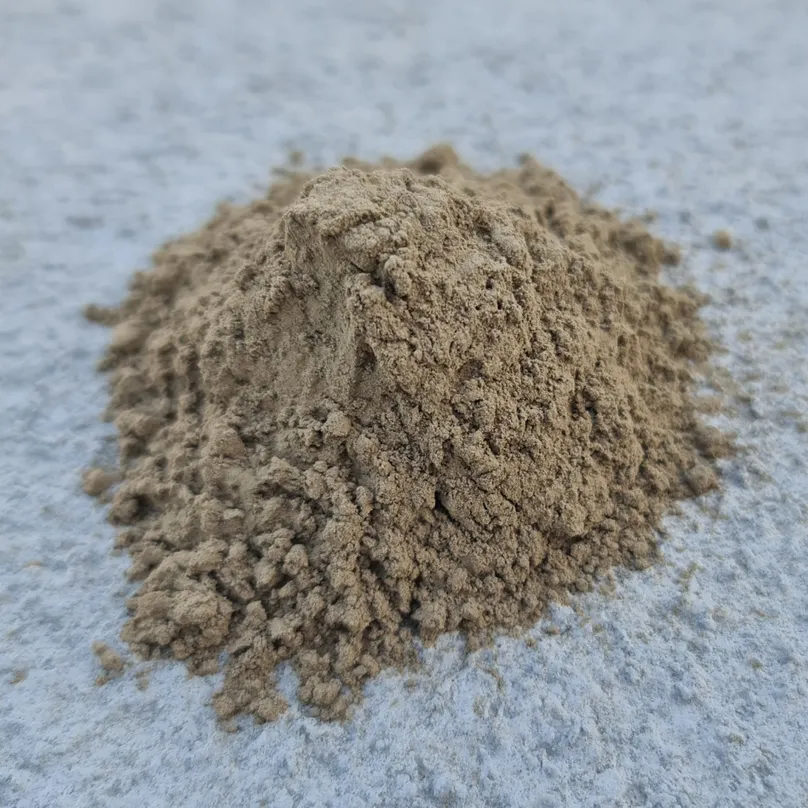Fly ash
Fly ash (FA) is a by-product of combusting coal in power plants. During the combustion of pulverised coal in furnaces, ash with different particle sizes is generated. The lightweight greyish ash that is collected by electrostatic precipitators is called FA and accounts for approximately 90% of the total generated ash.
The type of coal and mode of operation does impact the particle size distribution of FA. According to the Australian Standard AS/NZS 3582.1-2016, FA must contain at least 75% of particles smaller than 45 µm to meet the specified requirements.
How is it processed?
The processing of FA involves several steps to ensure that it is suitable for its intended use. Typically, the process includes collecting FA from power plants, transporting it to storage facilities, grinding it to the desired particle size, and blending it with other materials (such as cement) when used as a supplementary cementitious material (SCMs). It is crucial to keep FA dry, as moisture absorption can negatively impact its properties.
Environmental, health, and safety
Fine-powdered FA can cause mechanical irritation to the eyes and respiratory system. Personal protective equipment such as safety goggles, gloves, impervious clothing and suitable dust masks should be worn when handling FA.
Department of Water and Environmental Regulation in Western Australia specifies the classification of waste for landfills and sets relevant contaminant concentration limits for each waste category, which must be considered when disposing of FA. These requirements can be used as guidance for the use of FA in fill applications for infrastructure projects.
Applications
FA can be used in a number of infrastructure applications. These include:
- as a SCM in concrete such as concrete pavement in roads, and concrete sleepers for rail as a binder or SCM for stabilisation of both pavement layers and subgrade
- as a precursor (source of alumina and silica) in geopolymeric binders for stabilisation, and geopolymer concrete
- as an additional SCM in foamed-bitumen stabilisation
- as a filler in asphalt to replace natural mineral fillers
Specifications
Main Roads Western Australia and the Public Transport Authority currently have specifications that consider the use of FA in a number of products, such as:
- Specification 302 for Stabilisation of subgrade
- Specification 404 for Concrete culvert
- Specification 410 for Low strength infill abandoned pipes, culverts and other buried structures
- Specification 515 for In-situ stabilisation of granular pavement layers
- Specification 820 for High performance concrete structures
- 8880-450-020: Specification - Design of Concrete
- 8880-450-021: Specification – Concrete durability
- 8880-450-028: Specification – Sprayed Concrete
Benefits and challenges
Using FA as a cementitious material to replacement Portland cement and lime in concrete manufacturing and stabilisation work offers several benefits, including conserving natural resources, reducing energy consumption and carbon emissions, and minimising landfill waste.
However, challenges may arise, such as extended setting times for binders that contain only FA and the potential respiratory risks from inhaling fine FA particles during handling.
Previous use in Western Australia
In Australia, FA has been used in various applications, including concrete manufacturing and as a cementitious binder since 1975 across jurisdictions, including Western Australia. Several specifications are available in Western Australia to guide the use of FA in different applications. However, the current recovery rate of FA in Western Australia is only 72%, highlighting the need for its wider adoption.

References
- Main Roads Western Australia (MRWA) 2024, Earthworks, Specification 302, MRWA, WA.
- Main Roads Western Australia (MRWA) 2023, Culverts, Specification 404, MRWA, WA.
- Main Roads Western Australia (MRWA) 2024, Low strength infill, Specification 410, MRWA, WA.
- Main Roads Western Australia (MRWA) 2021, In situ stabilisation of pavement material, Specification 515, MRWA, WA.
- Main Roads Western Australia (MRWA) 2023, Concrete for structures, Specification 820, MRWA, WA.
- Hall, B, Grenfell, J, Pandelidi, C, Yaghoubi, J, Chaudry, U, Lyons, M, O'Connor, G, Harrison, J & Feigen, D 2022, Best practice expert advice on the use of recycled materials in road and rail infrastructure: part A technical review and assessment.
- Hall, B, Grenfell, J, Pandelidi, C, Yaghoubi, J, Lyons, M, O'Connor, G, Harrison, J, Feigen, D & Xue, S 2022, Best practice expert advice on the use of recycled materials in road and rail infrastructure: part B sustainability impacts report.